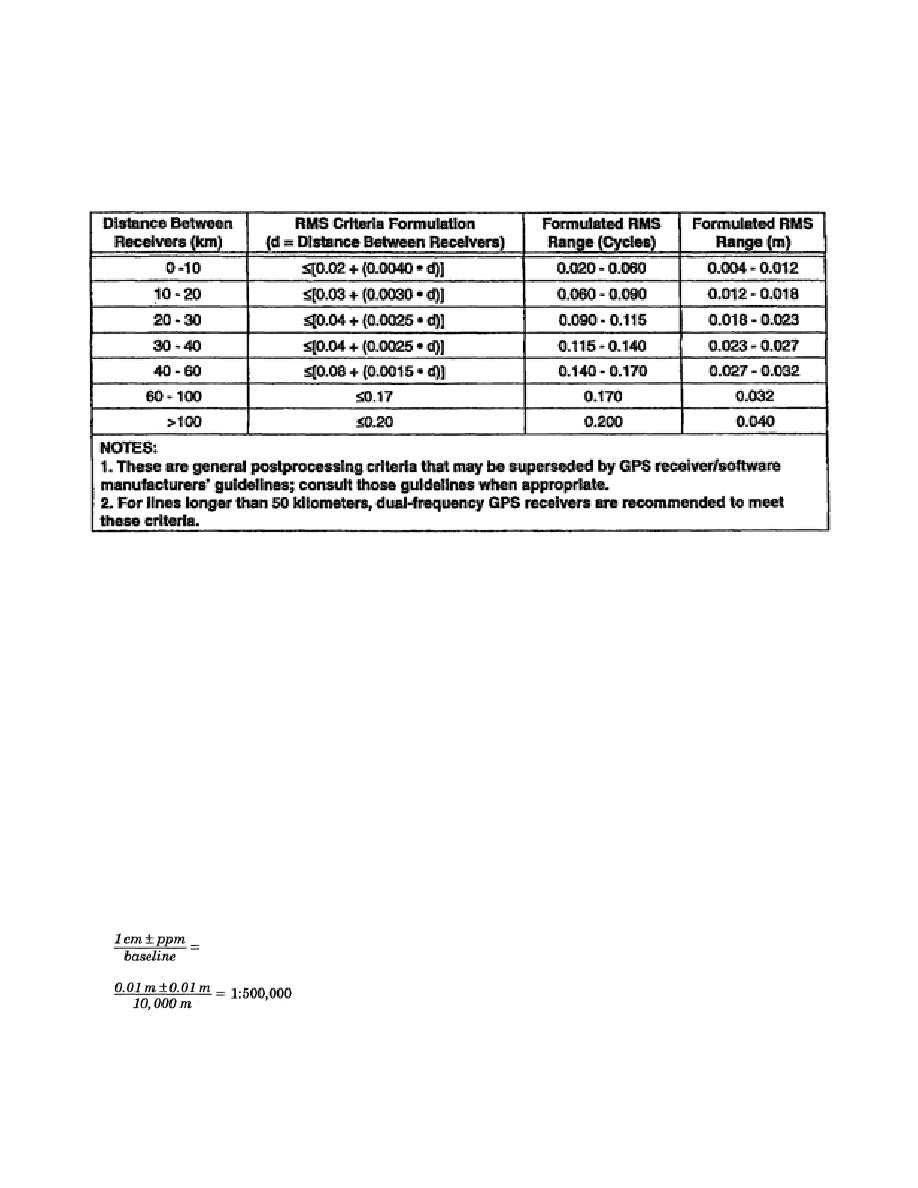
does not fit into the network adjustment, the surveyor should use the float vector in the adjustments or
check to make sure that the stations were occupied correctly.
Table 5-4. Guidelines for Determining the Baseline Quality
5-42. Postprocessing Criteria. Generally, postprocessing software will provide three solutions--a
triple difference, a double-difference fixed solution, and a double-difference float solution. In addition
to the relative dilution of precision (RDOP) as a measurement of the quality of data reduction, two
methods that can be used to gauge the success of an observation session (based on data processing done
by a differencing process) are RMS and repeatability.
a. An RMS is a measurement (in units of cycles or meters) of the quality of the observation data
collected during a particular time period. RMS is dependent on the line length, the observation strength,
the ionosphere, the troposphere, and multipath effects. In general, the longer the line and the more
signal interference by the ionosphere, the troposphere, multipath effects, and other electronic gear, the
higher the RMS. A good RMS factor (between 0.01 and 0.2 cycles) may not always indicate good
results but is one indication to be taken into account. RMS can generally be used to judge the quality of
the data used in the postprocessing and the quality of the postprocessed baseline vector.
b. Redundant lines should agree to the level of accuracy that GPS is capable of measuring. For
example, if GPS can measure a 10-kilometer baseline to 1 centimeter 1 ppm, the expected ratio of
misclosure would be:
5-37
EN0593


 Previous Page
Previous Page
